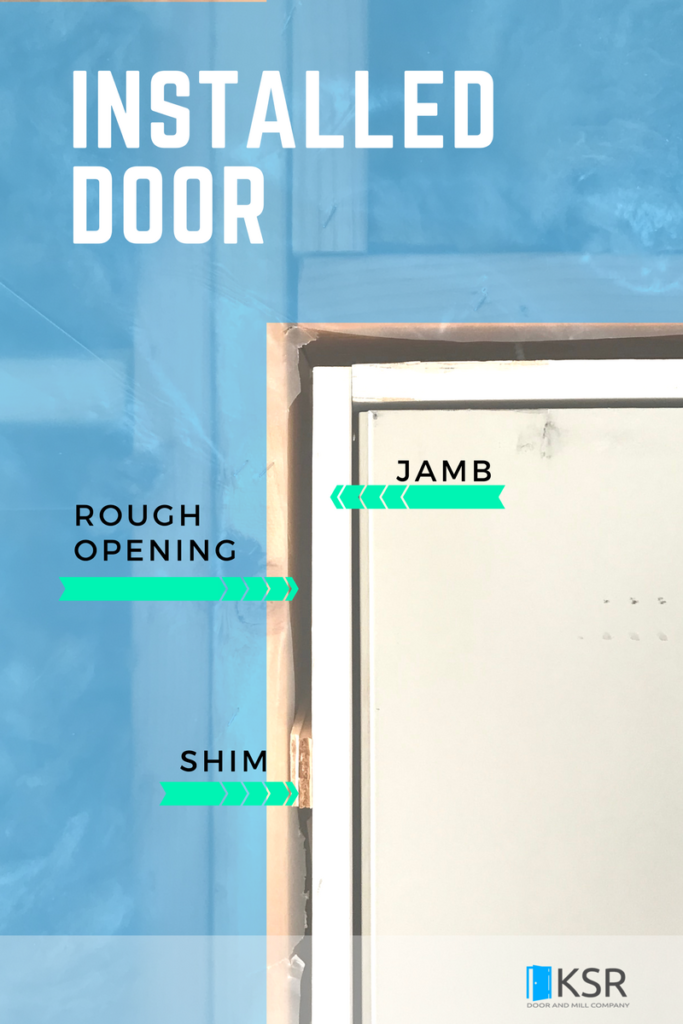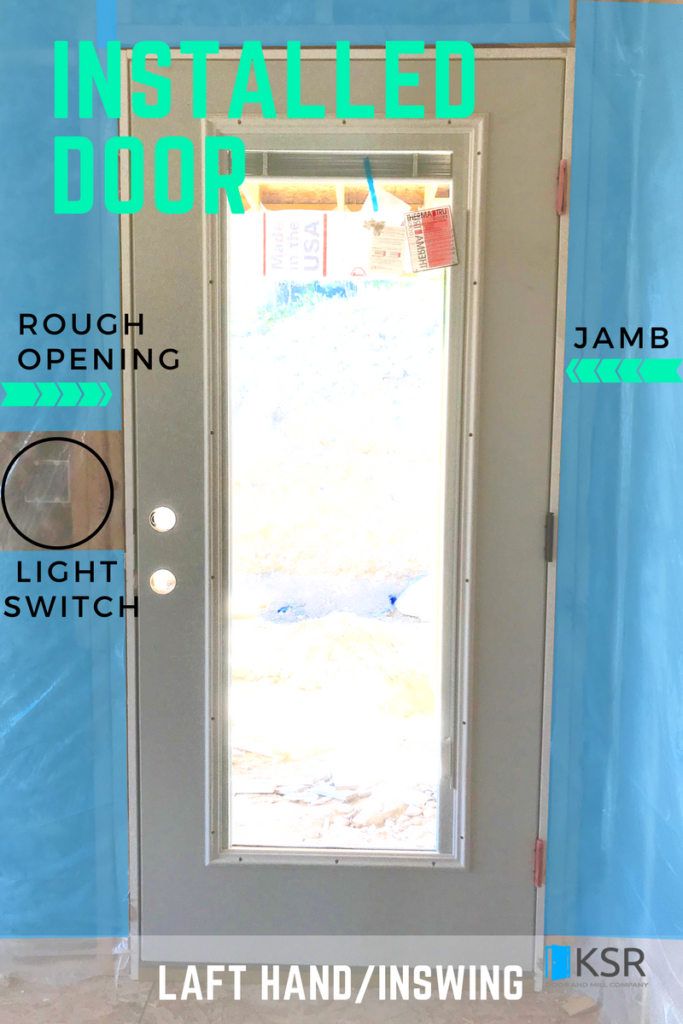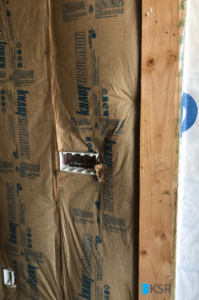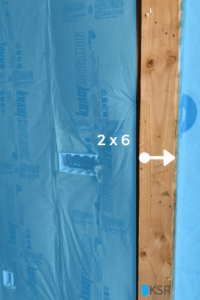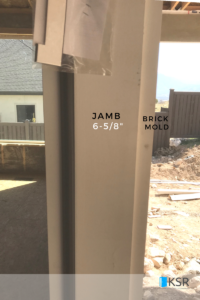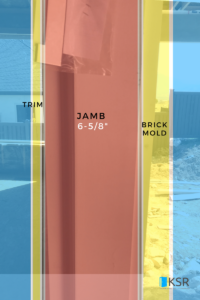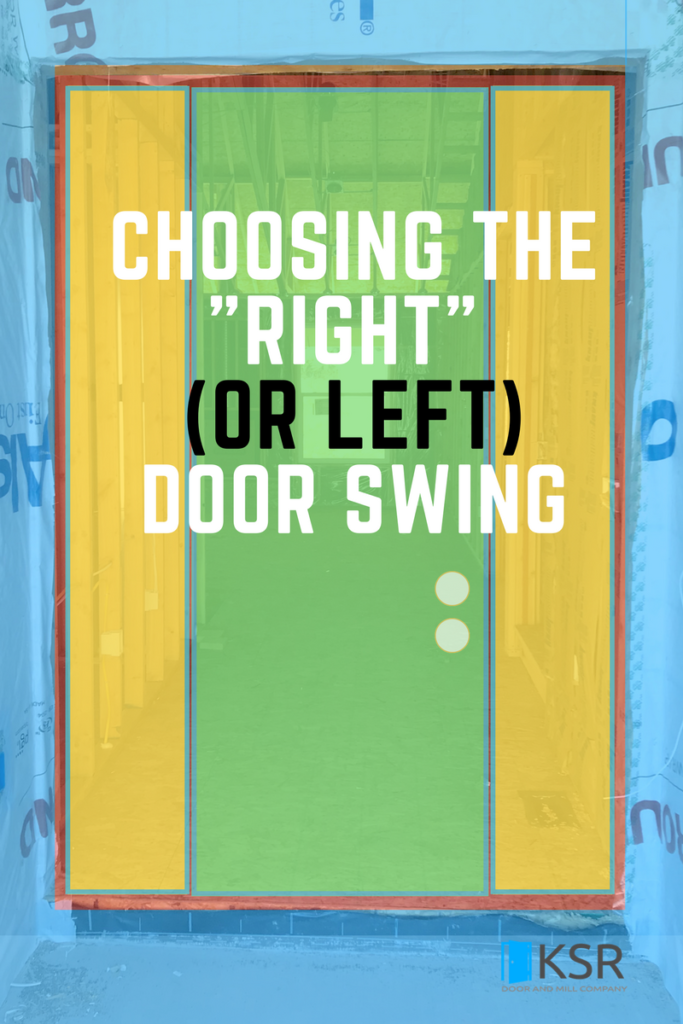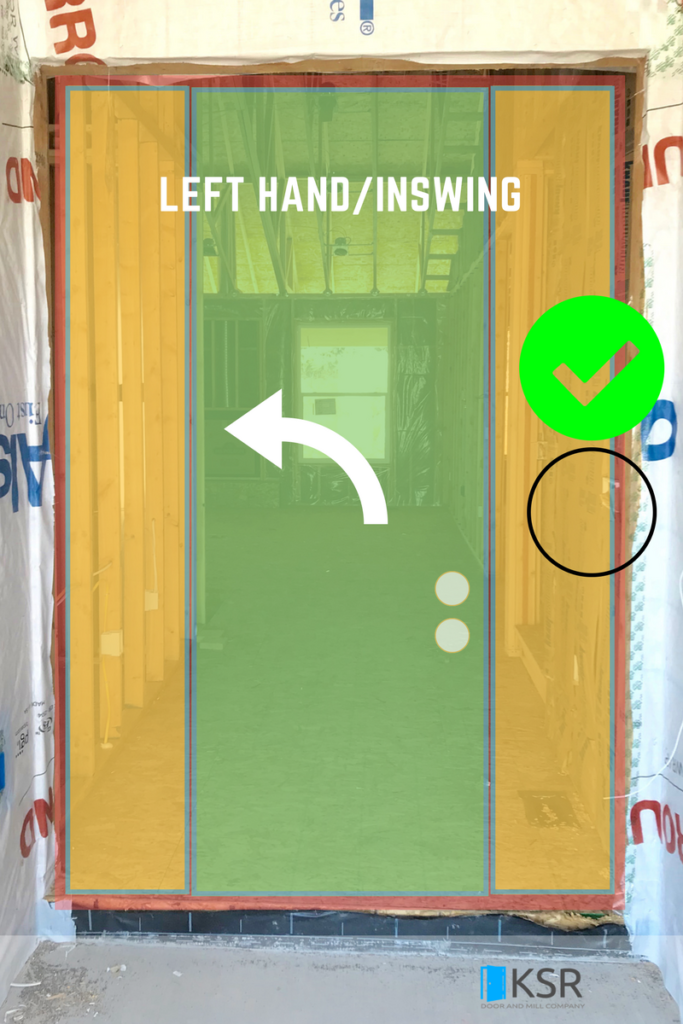Wheather your remodeling or starting a new home build, finding the perfect door fit is simple and quick. There are only 3 measurements and a couple of notes needed for each door. Your doors rough opening height and width, jamb width, and the swing or handing of the door.
This is the edge of one side of the stud to the edge of the other side of the stud. See How-To below,
This is the inside edge of the door jamb to the outside of the edge of the door jamb (the area where hinges are). Do not include any trim in this measurement.
All swings must be done determined from the exterior side of the room or house. From the outside of your house/room looking into the house is your door a: left hand/right hand, Inswing/ Outswing. See How-To below
How to Measure for a New Door
How to Find Your RO
RO Step 1: Finding the Width (w)
Measure the inside distance between one stud, to the inside face of the other stud and write down the measurement
A / B Measurement (W) : ______________
RO Step 2: Finding the Height (H)
Measure the distance from the subfloor (plywood or concrete) to the inside face of the 2×4 or 2×6.
C / D Measurement (H) : _________________________________
RO Measurement: ____________ W x _____________ H
Repeat this process for every single doorway in your new home. Don’t assume that any of the doors have the same RO.
Rough Opening
How to Find Your RO
RO Step 1: Remove the Interior Trim
To ensure the most accurate measurements, first, remove the interior casing on the sides and top of the door. (Video Below)
NOTE: As I’m typing this out I can hear my wife getting upset with me for removing the interior trim and making the entryway “look bad” for a while. If, you have some hesitations about this just remember that very soon you’re going to be RIPPING OUT that ugly door and getting the Door of Your Dreams. It’s better to get an accurate measurement than to pay for and get a door that doesn’t fit.
RO Step 2: Finding the Width (W)
Measure the inside distance between one stud to the inside face of the other stud and write down the measurement
A / B Measurement (W) :____________
RO Step 3: Finding the Height (H)
Measure the distance from the subfloor (plywood or concrete) to the inside face of the 2×4 or 2×6.
C / D Measurement (H) : _________________________________
Step 4: Measure the Width and Height of Existing Door
A/B Measurement (W) : _________________________________
C / D Measurement (H) : _________________________________
RO Measurement: ____________ W x _____________ H
Door Measurement: ____________ W x _____________ H
Repeat this process for every single doorway in your new home. Don’t assume that any of the doors have the same RO.
Rough Opening
Getting the right jambs size is also very important. You don’t want a jamb that is too big or too small. If it’s too big your exterior and interior trim won’t fit and your installer will have to take your door apart and cut down your jambs. If the jamb is to small your installer will have to add more trim or get new jambs altogether.
NEW CONSTRUCTION
Step 1:
Measure the width of the stud within the RO or ask your contractor if you have a 2×4 or a 2×6 stud for the entryway or door frame openings.
Stud Width : _________________
REMODEL OR REPLACEMENT
Step 1:
Measure the distance between the interior trim and the exterior brick mold/trim. Do not include any trim in this measurement.
Jamb Width : ________________
We Offer 3 Sizes:
4-5/8″ – 5-1/4″ – 6-5/8″ Jambs.
Stud/Jamb Size
I am text block. Click edit button to change this text. Lorem ipsum dolor sit amet, consectetur adipiscing elit. Ut elit tellus, luctus nec ullamcorper mattis, pulvinar dapibus leo.
Your Door Swing
Door Swing Chart
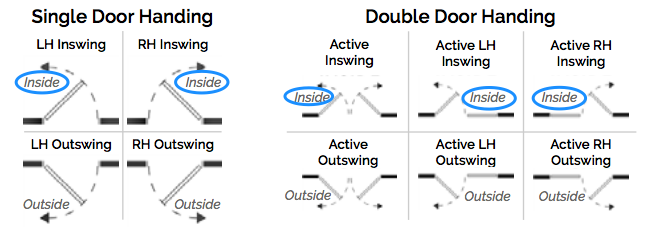
Types of Swing:
- Left-Hand Inswing
- Right-Hand Inswing
- Left-Hand Outswing
- Right-Hand Outswing
TIP: FIND THE LIGHT SWITCH.
Find the light switch: You want to make sure you know where the light switch is or where it is going to be. WHY? You want to walk into the room and not have to close the door to get to the switch. See the example images of a door we recently made and dropped off at a new construction. We made the door a Left hand / Inswing so that the owner could open the door into his house and reach over to turn on the lights. If we had made the door a Right-Hand door he would have had to close the door to get to the light switches.
Note: See images to the right.
1: The swing of a door is always seen as if you are going INTO a room or house.
See the chart below.
THE CHEATERS WAY: To Finding the Door Swing
- Stand with your back against the jamb/stud of the door where you hinges will be so that you’re facing the other door jamb/stud.
- Stick both arms out in front of you and point at the jamb/stud
- Swing one arm to act as if it was your door swinging into or outside of your home
- Did you use your:
- RIGHT ARM to swing INTO your home or room. …… RIGHT-HAND INSWING
- LEFT ARM to swing INTO your home or room…… LEFT-HAND INSWING
- RIGHT ARM to swing OUTSIDE your home or room ……. LEFT-HAND REVERSE (Right Hand Outswing)
- LEFT ARM to swing OUTSIDE your home or room….. RIGHT-HAND REVERSE (Left Hand Outswing)
- Did you use your:



